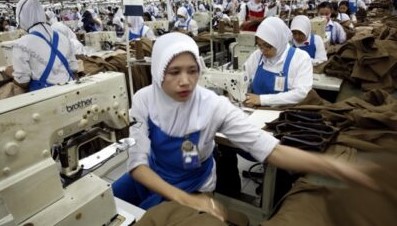Indonesia regulates manpower through Law No. 13/2003 on Manpower. Article 1 number 1 stipulates that “employment is all matters related to labor at the time before, during, and after employment”.
Law No. 13/2003 is established to empower workers optimally and humanely, create jobs and improve the welfare of the workers.
Employment relationship is based on an agreement between an employer and a worker. Based on Article 50-65 of Law No. 13/ 2003, there are two types of employment relationship, namely the employment relationship based on the Specified Time Work Agreement (PKWT) and the employment relationship based on the Indefinite Time Work Agreement (PKWTT).
Every business actor is obliged to fulfill the rights of workers.
The basic rights of the workers are the right to obtain a decent wage; the right to equal opportunity and treatment from the company without discrimination; the right to improve and develop work competencies; the right to carry out work in accordance with the specified time; the right to protection for occupational health and safety; the right to welfare through the social security of labor; the right to leave; the right to maternity and menstrual leave for female employees; the right to worship and other rights as stipulated in Law No. 13/2003.
Gender Equality In Employment
Female workers must receive special protection related to the nature attached to them, namely menstruation, pregnancy, childbirth, and breastfeeding. Law No. 39 /1999 on Human Rights specifically protects the rights of female workers from giving birth to breastfeeding period as stated in Article 10 paragraph 1.
This is the basis of the state to respect and protect the rights of women workers. Therefore, business actors are obliged to ensure legal protection for female workers related to their reproductive rights, referring to the rights and freedoms related to reproductive aspects and health.
Although a number of legal instruments have regulated the rights of female workers, there are business actors who violate them. One violation that often occurs is a violation of Article 82 paragraph (1) of Law No. 13/2003 stipulating the right to maternity leave for female workers .
The emergence of discrimination against female workers also arises when it comes to benefits or wages/salaries. Generally, business actors tend to provide additional benefits to male workers in the form of welfare benefits for their children and wives. In contrast, female workers do not get the same benefits.
Ironically, this treatment has an impact on limiting positions and positions for female worker. For example, there are companies requiring a man to do a particular job. In addition, strategic positions are mostly entitled to male workers. Female workers are generally positioned in not so strategic positions.
In addition to the right to anti-discrimination, female workers are also entitled to maternal rights. Maternal rights are essentially the same as reproductive health rights. This aspect of protection of maternal rights is a provision that must be stipulated into the labour laws and regulations in Indonesia.
Maternal rights include the right to get protection to generate offspring in the form of not being fired due to pregnancy or marital status, obtaining paid maternity leave, procuring social services in the form of daycares, and getting jobs that do not endanger pregnancy.
Based on the above arguments, it is clear that there are a number of legal instruments that protect female workers. The laws not only protect and guarantee the rights of female workers, but also requires business actors to obey the laws.
If there are deviations or neglect of workers’ rights leading to disputes between workers and business actors, the objecting party may file a settlement effort through the Industrial Relations Court in accordance to Law No. 2/2004 on Industrial Relations Disputes.
There are various disputes between workers and employers such as disputes over workers’ rights, disputes of interest, termination of employment (layoffs), and conflict between the union and the company’s management.
These disputes may be resolved by taking a number of efforts such as going through bipartite negotiations, mediation, conciliation, and arbitration. If those efforts fail, the aggrieved parties are entitled to bring the case to the Industrial Relations Court.
Here it is clear that the court is the last resort to settle the disputes.
Author / Contributor:
| Erwin, S.H. Associate Contact: Phone : +62-21 799 7973 / +62-21 799 7975 |
